As I go through my scholarship year, I am prioritizing learning about the creative solutions that people around the world are developing to tackle our global issues concerning the oceans. Climate change is the overarching problem we are facing, but within climate change is a latticework of challenges concerning food security, resource management, economics and health, all linked to the oceans. Our current methods of interaction with the oceans, whether it be for food, building, transport or anything else, are often destructive and extractive. But they don’t have to be this way. We are faced with a myriad of challenges, requiring a myriad of solutions and a shift in the basis of our interactions with the world around us.
The solutions I find the most fascinating are the ones that address multiple issues at once and create elaborate sustainable systems that mirror the relationships within the natural world around us. Such solutions allow humans to develop symbiotic relationships with our ecosystems, wherein we can utilize resources while giving back in return and maintaining the balance of the ecosystems we rely on.
This journey for solutions took me next to California, to the Moss Landing Marine Laboratories just outside of Monterey. Here, scientists are looking for ways to address food security through the lens of aquaculture and seaweed farming. I had been put in touch with a lead researcher at Moss Landing, Luke Gardner, who set me up to work with his technicians for a week and learn about the various projects ongoing at the lab.
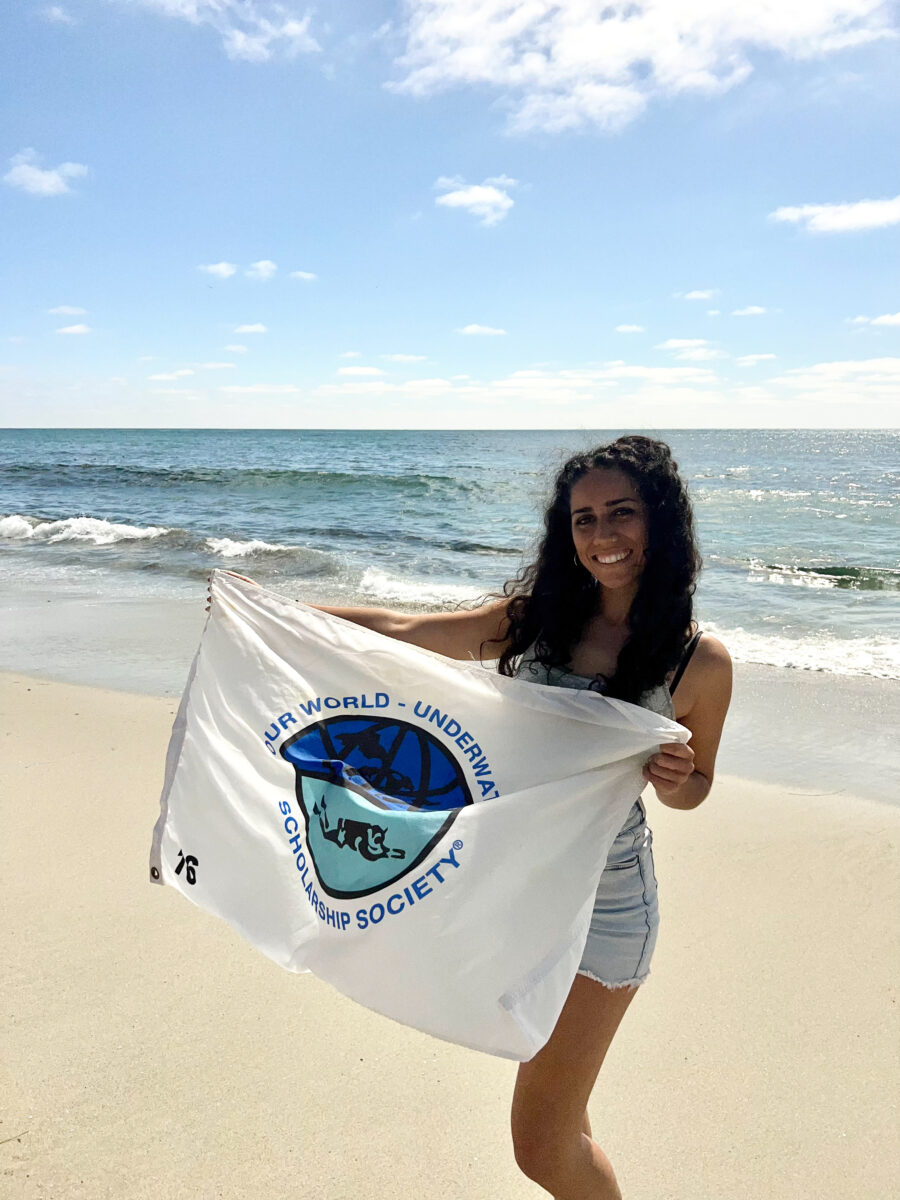
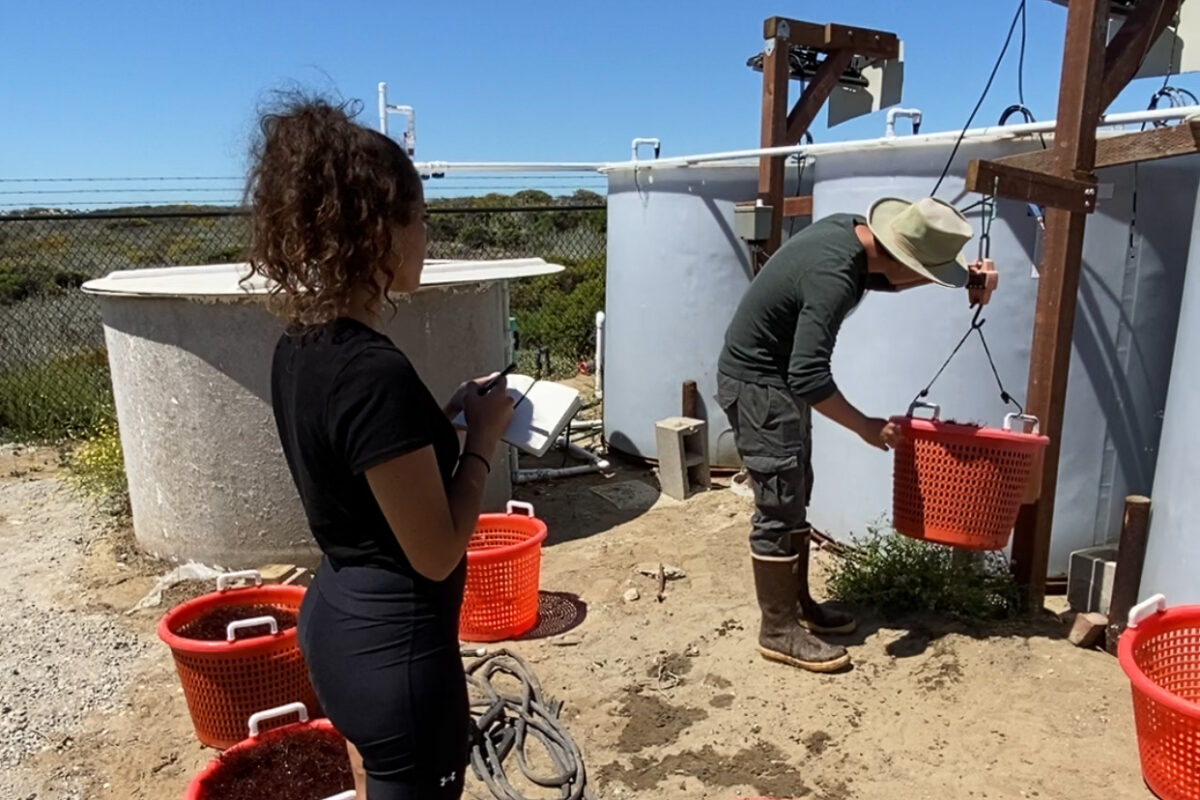
I was introduced to the team and began shadowing an aquaculture technician, Ava, during the week. Ava walked me through the laboratory and the various tanks and gave me an overview of the projects I would be working with throughout the week. We walked past tanks of clams, urchins, algae and pricklebacks. As she explained the intentions behind each research project, I was marveling at the intricacy of the projects they were working on and how each one was specifically addressing an ecological problem. I was in awe. She apologized that there wasn’t anything exciting happening at the lab while I was there. But to me, learning about the research and getting to see it first hand was overwhelmingly exciting. I quickly assured her that just being there and working with the team was thrilling for me.
One of the primary studies their team was working on, was looking into the ability of seaweeds to reduce the methane production in cattle when integrated into their feed. In Australia, a seaweed called Asparagopsis was determined to have the ability to reduce methane in cattle by 70% when integrated into their feed. Unfortunately, this seaweed is very challenging to farm at scale in California and harvesting it can be resource-consuming. Moss Landing ran a study to determine what seaweeds in California had similar characteristics. The best seaweed identified was Gracilaria Pacifica. As a result, they are now in the process of determining if this seaweed can be farmed at scale without negative environmental impacts and whether integrating it into cattle feed is viable for the cattle industry in the US. If successful, Gracilaria can contribute to lowering the carbon footprint of cattle farming.
This project is just one of the many solutions they are working on.

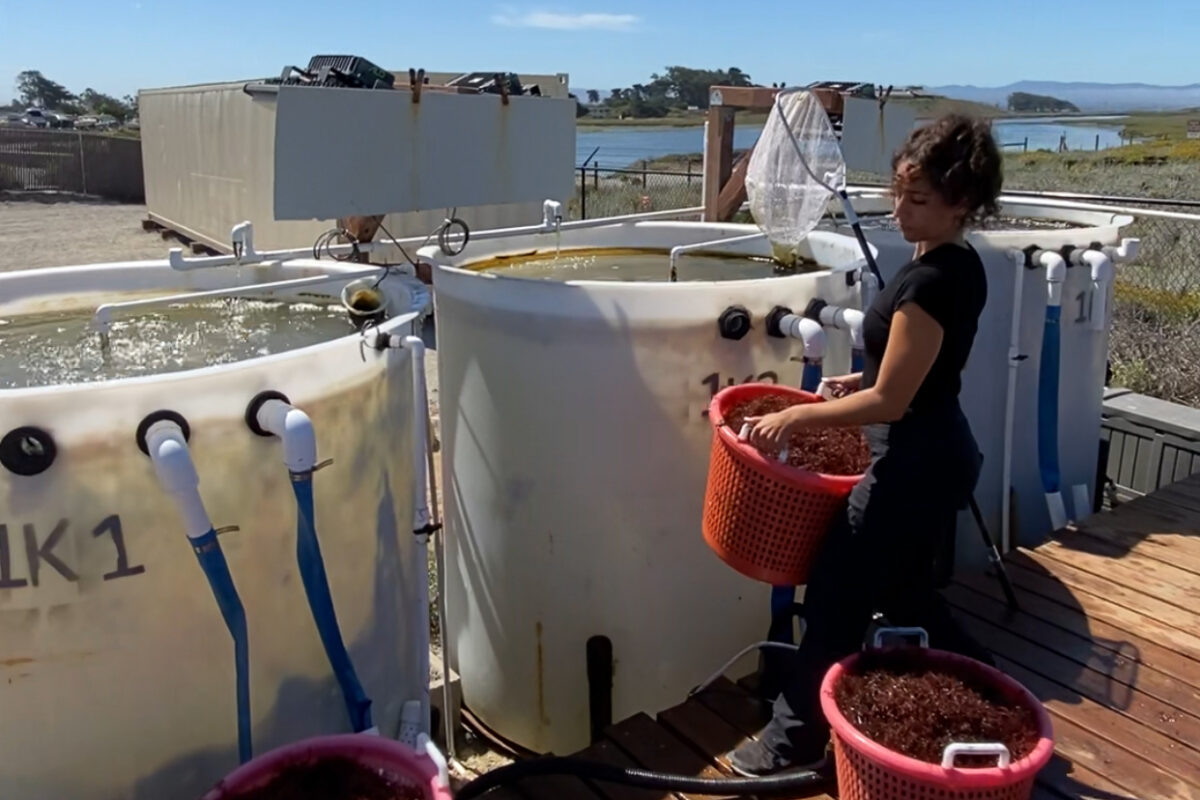
Another researcher was working on determining how to raise monkey-faced pricklebacks. These herbivorous fish species, if able to be successfully farmed, could reduce the market pressure on freshwater eels. Freshwater eels are popular on the market for Unagi in sushi but are carnivorous and are resource-consuming to raise. Herbivorous fish use significantly fewer resources to grow as they can be fed seaweeds and algae rather than fish feed. Shifting from carnivorous fish to more herbivorous fish in aquaculture reduces the carbon footprint of the aquaculture industry.
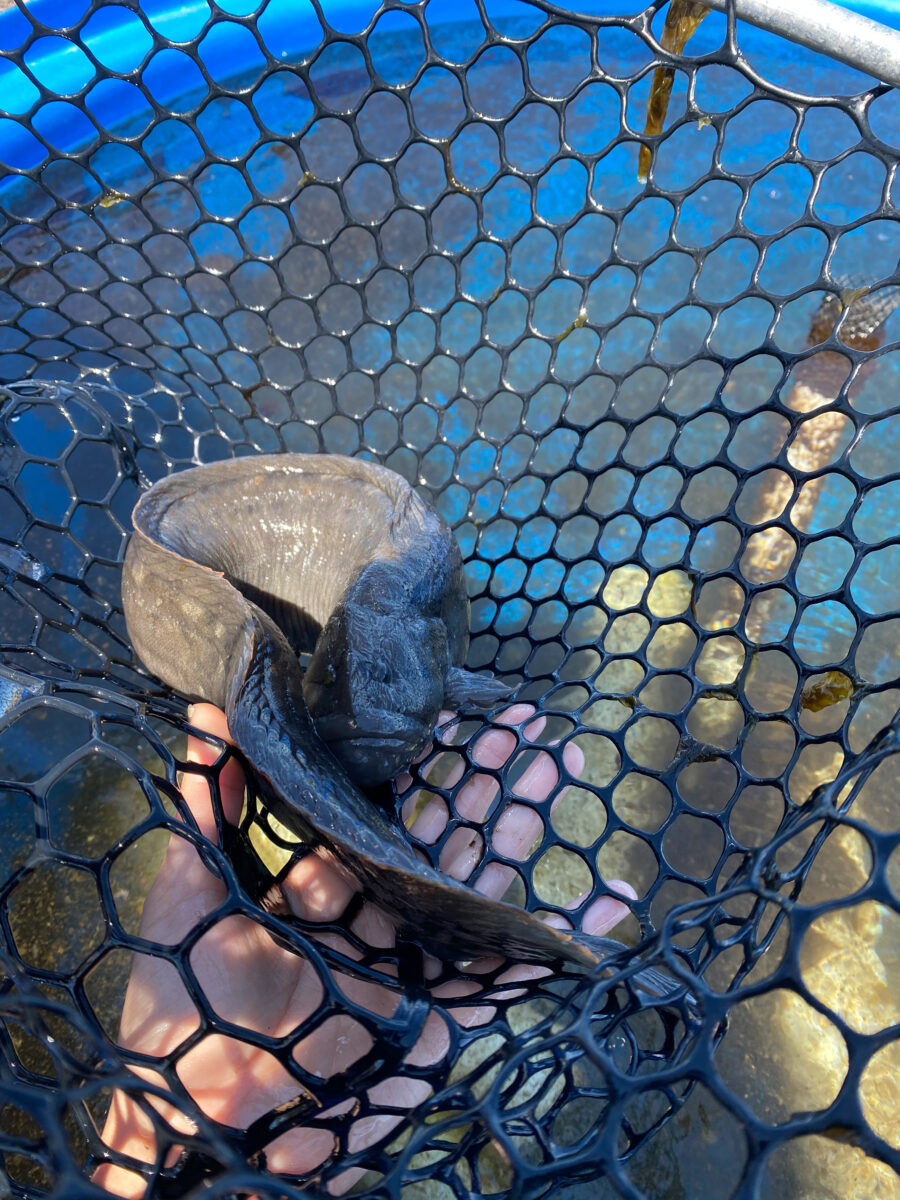
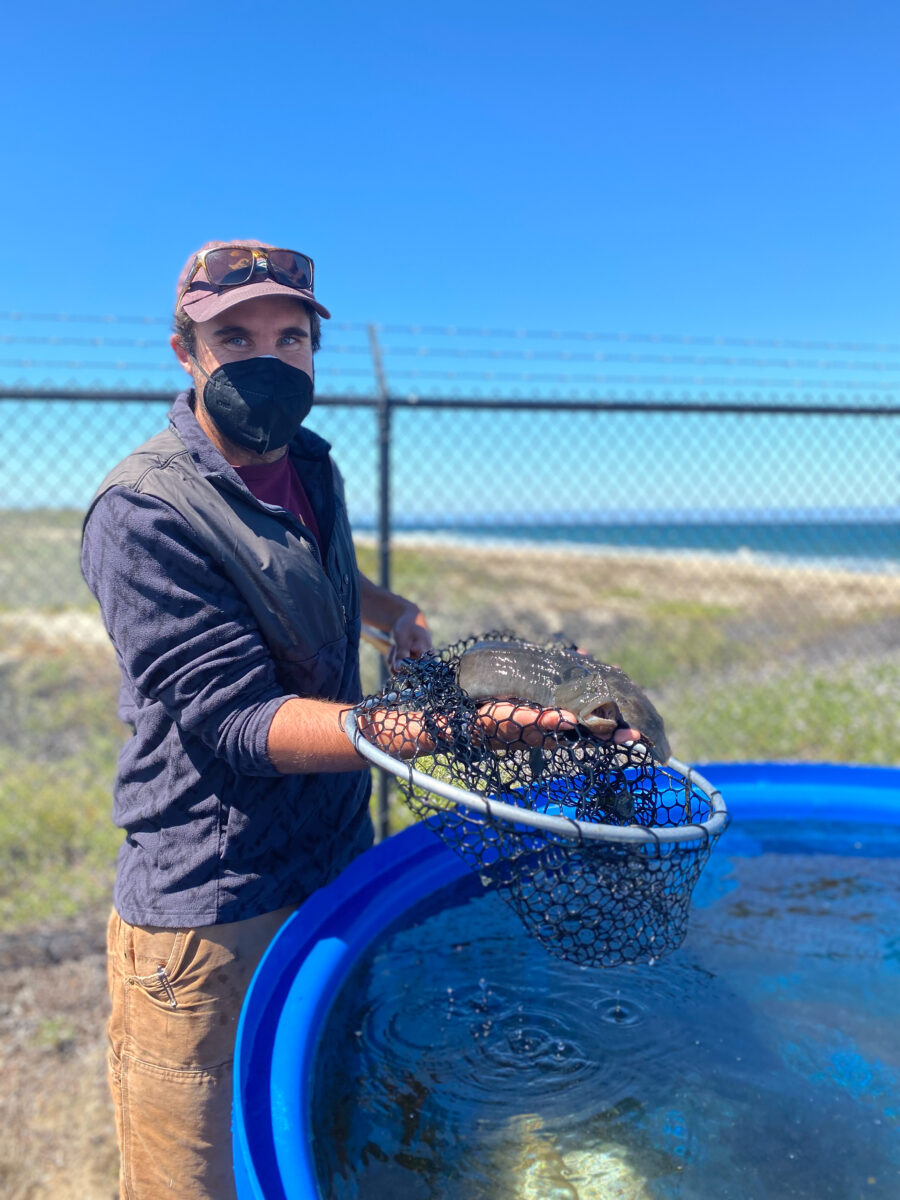

Moss Landing Marine Laboratories was working on several projects of this nature, including raising urchins to reduce kelp barrens, raising shellfish in closed circuit systems on land such that they can’t affect surrounding ocean ecosystems and many other such projects. Every project worked to provide a solution for an ecological issue while improving food security for people dependent on seafoods for protein.
It’s important to remember that 3 billion people worldwide are reliant on wild-caught and farmed seafood as their primary source of protein. There are those who argue that we should stop eating seafood entirely to improve the state of the oceans, but for many, this is not an option. Maybe in the future, globally, we won’t be so reliant on fish to sustain ourselves, but in the meantime we have a responsibility to improve our methods of harvesting and growing seafood globally. Places like Moss Landing Marine Laboratories are working on this front and raising the bar of aquaculture methods for the global community and I was grateful to have the opportunity to learn about their work.
While in California I had the opportunity to connect with a lot of people from the Our World-Underwater Scholarship Society. Millie, the Australasian scholar and I had the opportunity to visit with gear sponsor Light and Motion and later with Award Winning Documentary film director Louie Psihoyos and chat with him about his work with the Oceanic Preservation Society. He shared with us his about how he uses imagery and film to create impact that is long-lasting and transformative. His creative mindset was inspiring to see in action.
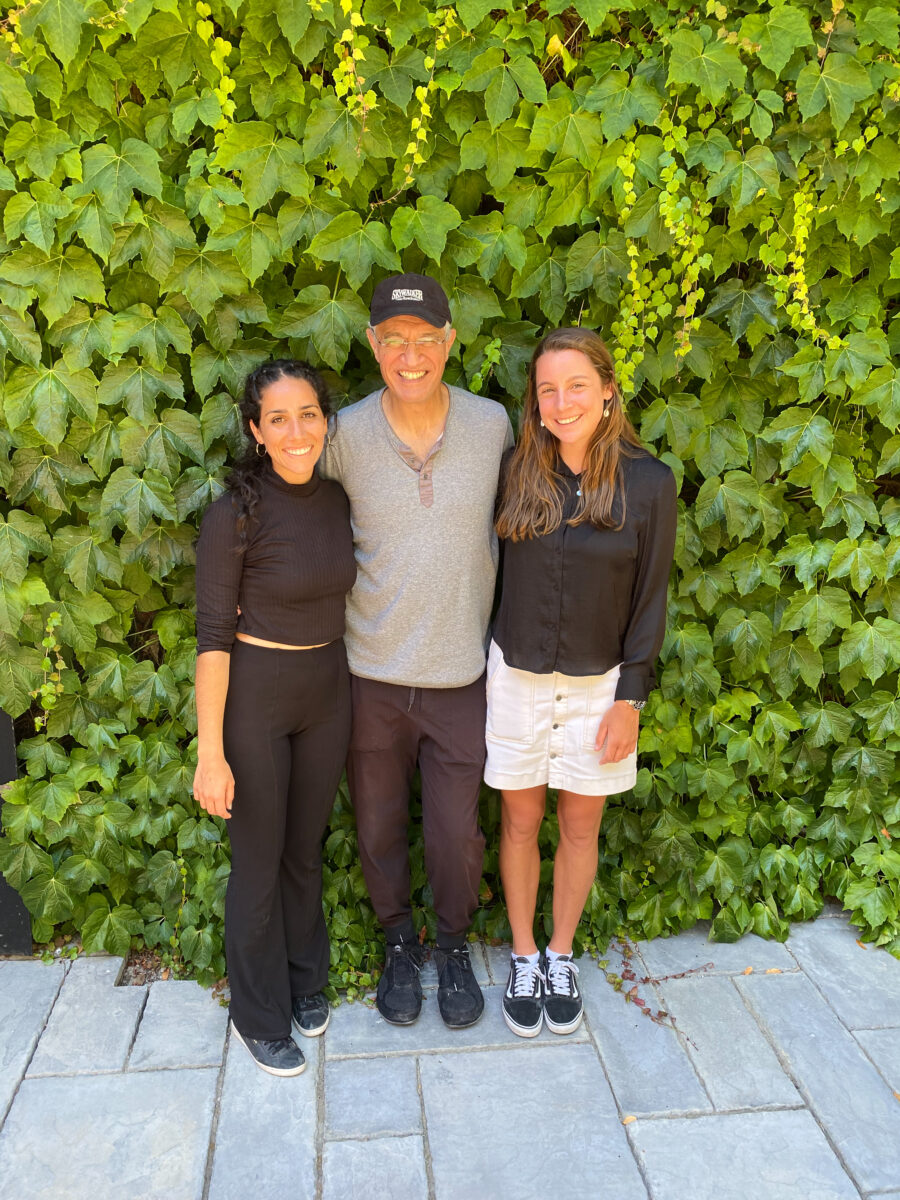
Meeting Louie Psihoyos
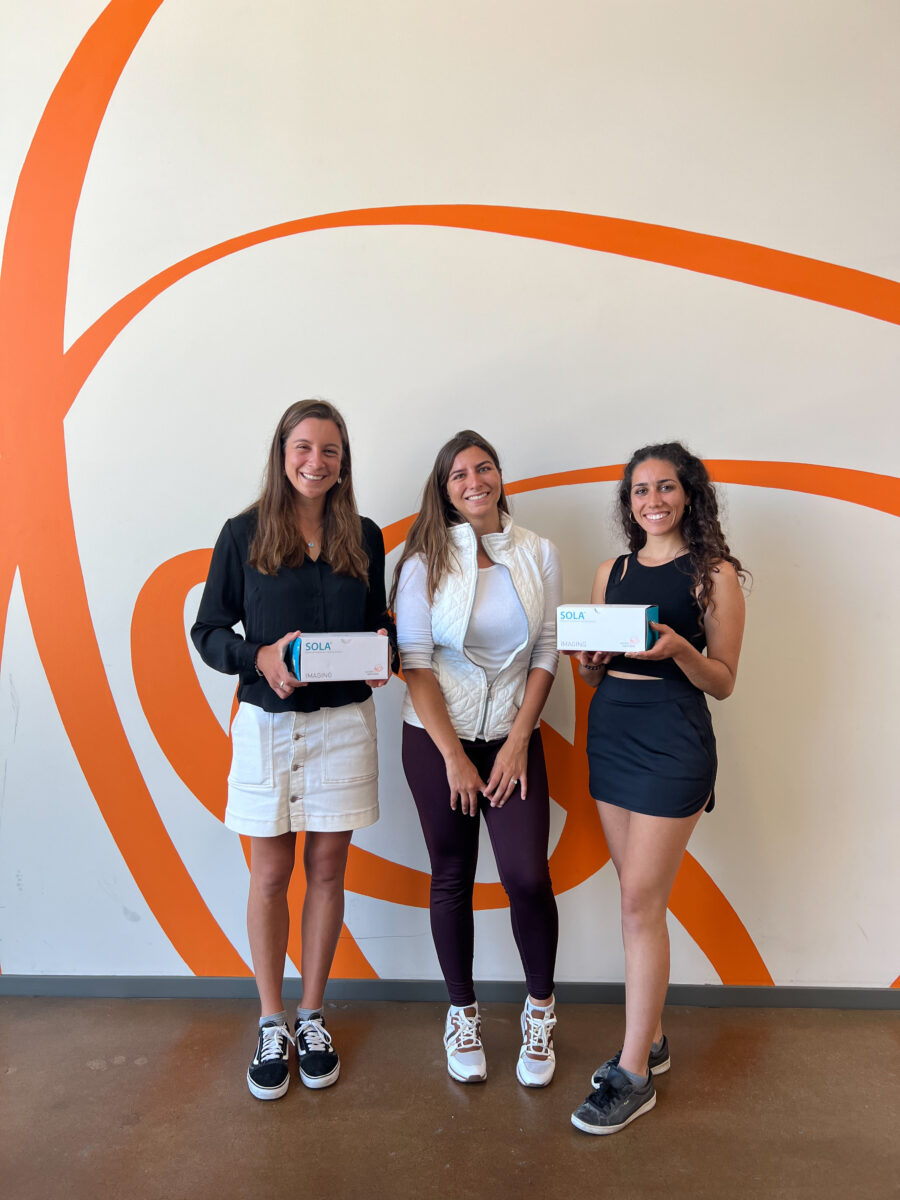
Meeting with Light and Motion
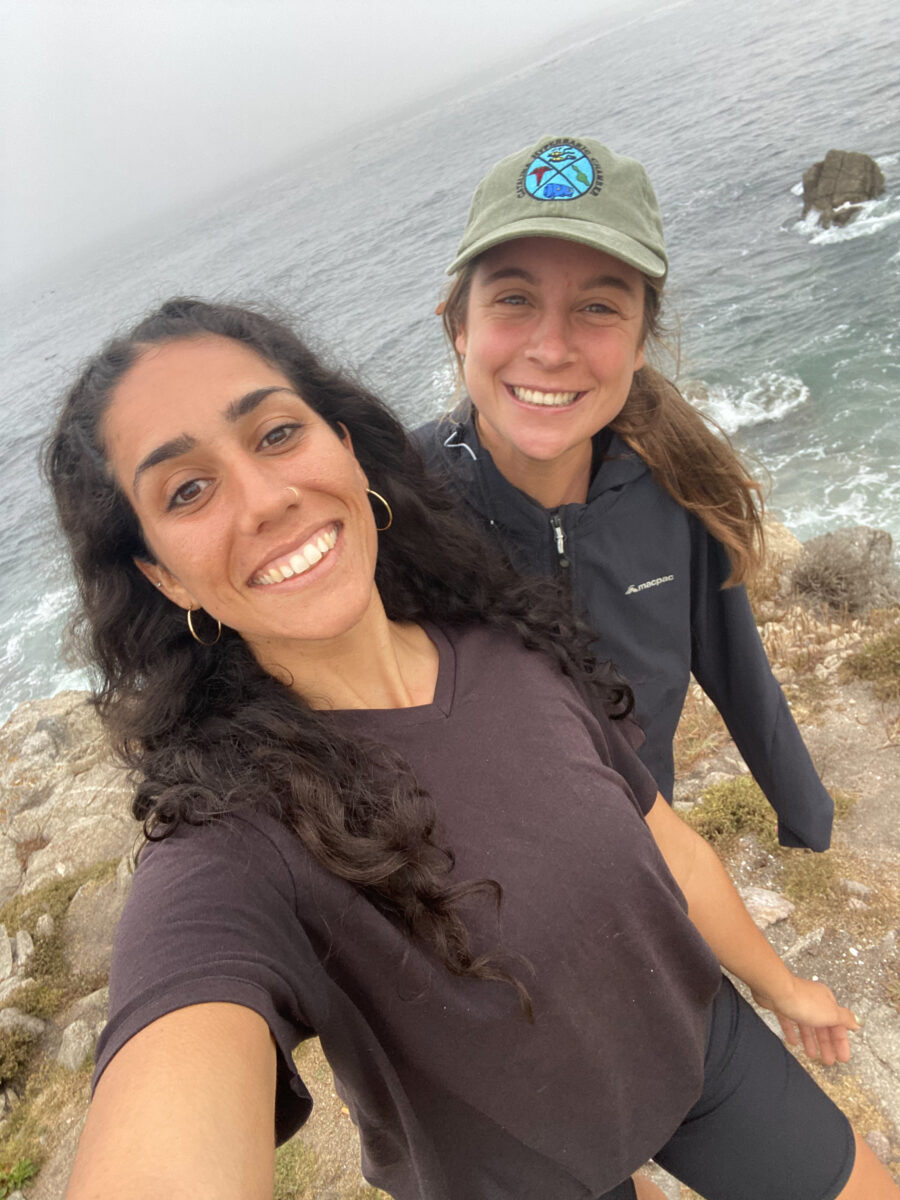
Seeing Sea otters in Monterey
Before leaving California I was able to visit with Aqualung and receive my diving gear for the year. I got to test out this new gear and my camera gear from Reef Photo and Video, with former scholar Sara Shoemaker-Lind. She is a talented underwater photographer and shared some tips and wisdom with me. While visiting in San Diego, I also had the opportunity to see another former scholar, Josh Stewart, who took me to swim with leopard sharks and guitar fish for the first time and visit the fish collection at the Scripps Research Institute.
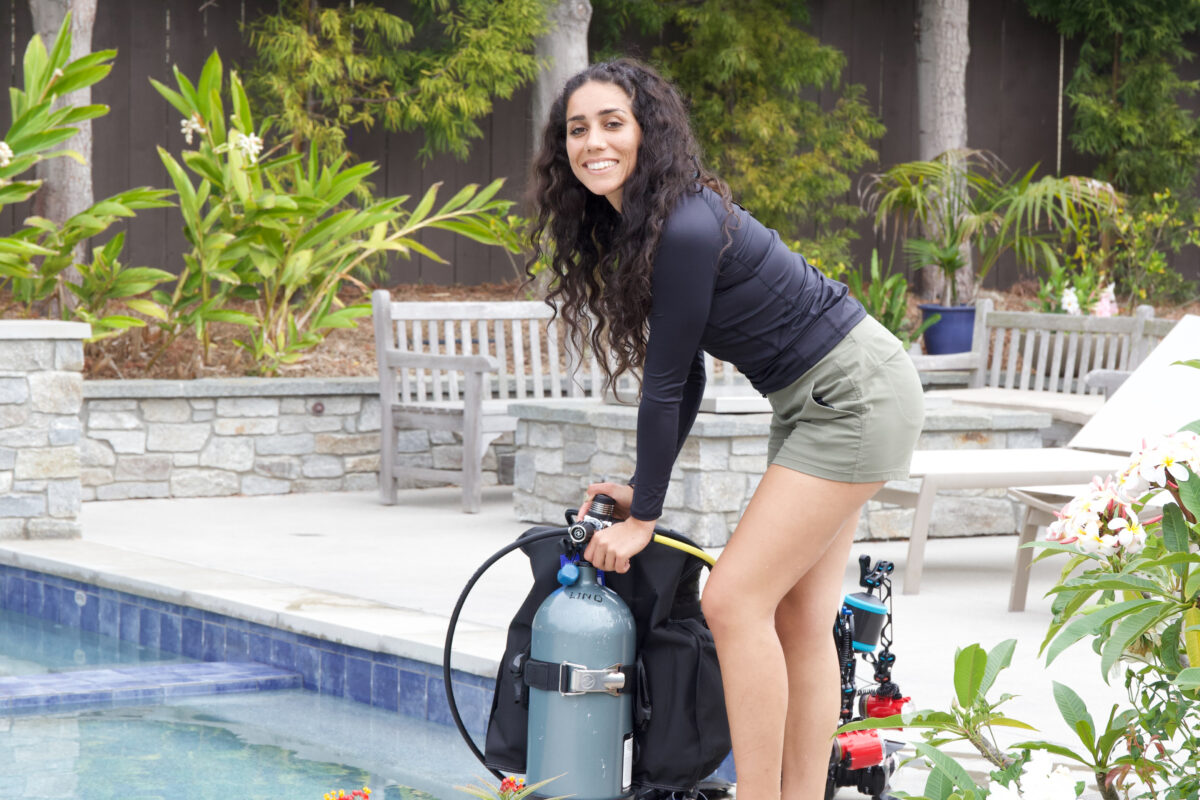
Setting up new camera and scuba gear for the first time – Photo by Sara Shoemaker-Lind

Picking up gear with Aqualung office – Photo by Sara Shoemaker-Lind
I look forward to journeying through the rest of the year learning more about the art of solutions. A huge thank you to Rolex, Our-World Underwater Scholarship Society, DAN, and my product sponsors Aqua Lung, Diving Unlimited International (DUI), Fourth Element, Halcyon, Light and Motion, Nauticam and Reef Photo and Video for making these opportunities possible. I am looking forward to where the rest of the year will take me.